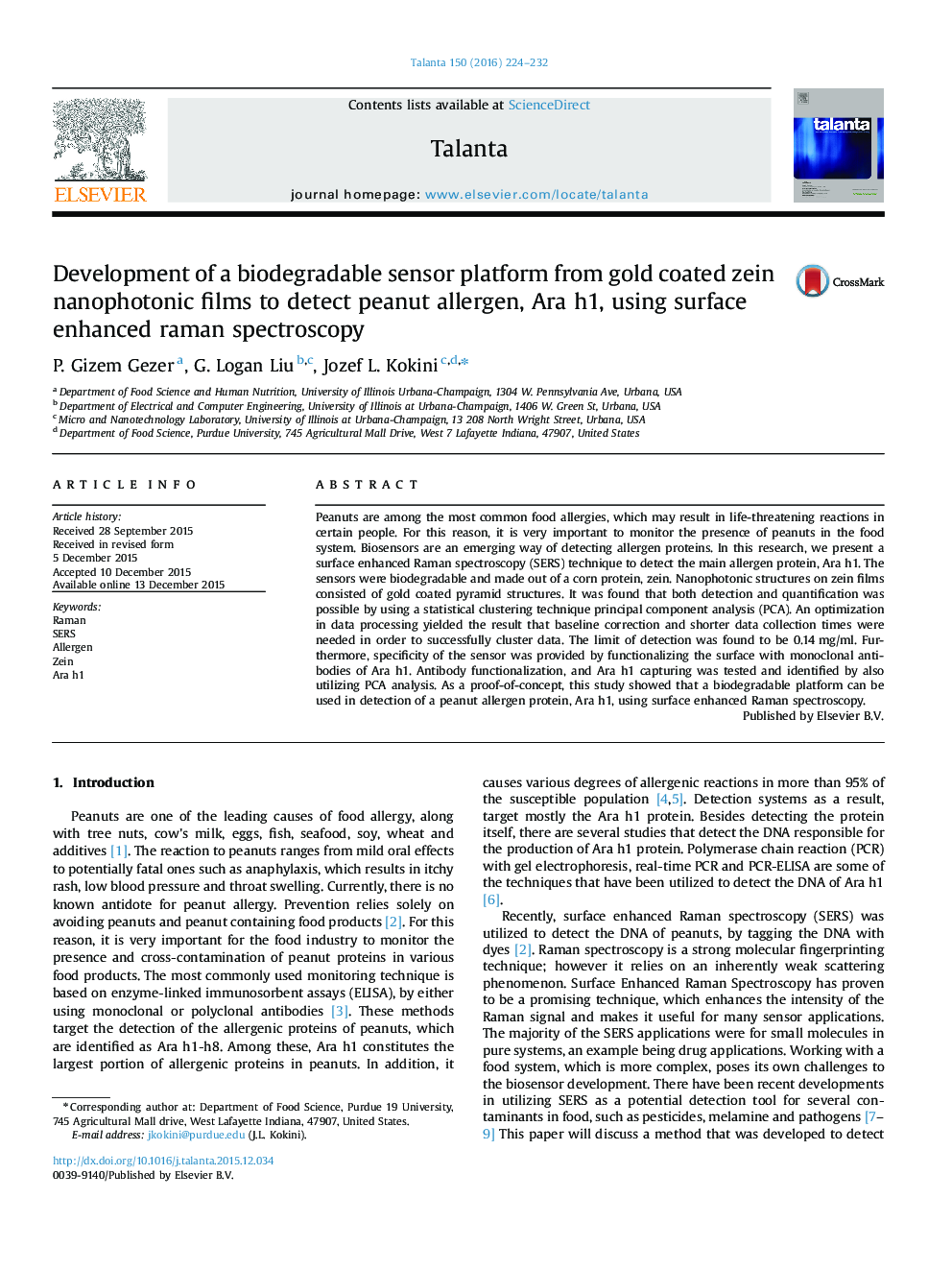| Article ID | Journal | Published Year | Pages | File Type |
|---|---|---|---|---|
| 1242166 | Talanta | 2016 | 9 Pages |
•Ara h1, a peanut allergen protein, was detected by (SERS) technique.•A biodegradable corn protein platform was used for SERS.•Principal component analysis technique was applied to cluster data.
Peanuts are among the most common food allergies, which may result in life-threatening reactions in certain people. For this reason, it is very important to monitor the presence of peanuts in the food system. Biosensors are an emerging way of detecting allergen proteins. In this research, we present a surface enhanced Raman spectroscopy (SERS) technique to detect the main allergen protein, Ara h1. The sensors were biodegradable and made out of a corn protein, zein. Nanophotonic structures on zein films consisted of gold coated pyramid structures. It was found that both detection and quantification was possible by using a statistical clustering technique principal component analysis (PCA). An optimization in data processing yielded the result that baseline correction and shorter data collection times were needed in order to successfully cluster data. The limit of detection was found to be 0.14 mg/ml. Furthermore, specificity of the sensor was provided by functionalizing the surface with monoclonal antibodies of Ara h1. Antibody functionalization, and Ara h1 capturing was tested and identified by also utilizing PCA analysis. As a proof-of-concept, this study showed that a biodegradable platform can be used in detection of a peanut allergen protein, Ara h1, using surface enhanced Raman spectroscopy.
Graphical abstractFigure optionsDownload full-size imageDownload as PowerPoint slide
